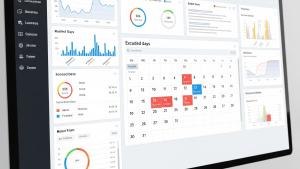Digital Experience Monitoring (DEM) is a user-centric approach to monitoring in which engineering teams focus on customer journeys and web performance as the main signals for software health. Whereas engineering teams may have historically interacted with customers through service desk incidents, DEM prioritizes efforts around the larger strategic goals of improved digital customer satisfaction and better business results.
New Relic One’s Full-Stack Observability delivers DEM by combining the capabilities of Real User Monitoring (Browser monitoring), Synthetics monitoring, and native Mobile monitoring. In New Relic, DEM is purpose-built to help you optimize the digital customer experience and troubleshoot performance issues fast.
Take a user-centric approach to performance optimization
Because modern websites are more dynamic, traditional “page load time” metrics no longer accurately measure what matters to customers. User-centric perceived performance metrics, such as Google’s Core Web Vitals, help web developers more effectively benchmark and improve page performance.
With New Relic One, you get:
-
Full support for Google’s Core Web Vitals, including Largest Contentful Paint (loading), First Input Delay (interactivity), and Cumulative Layout Shift (visual stability)
-
Additional metrics that include First Paint and First Contentful Paint (loading), First Interaction (interactivity), and Long Tasks (blocking JavaScript)
Eight total event types, each with dozens of attributes for JavaScript errors, SPA pages details, AJAX requests, geographical performance, and more

Improve deployments
Synthetics improves your deployments by finding and removing latency and errors before you go live. You can ensure functionality and performance across entire user pathways with a script editor—similar to those used for an integrated development environment—and driven by Selenium WebDriverJS.
With New Relic One, you gain:
- Detailed waterfall charts, API, third-party, and perceived performance measurements
- The ability to monitor uptime and performance of Kubernetes environments
- Automatic visualization of SLAs

Troubleshoot faster across your stack
End-to-end visibility within distributed tracing helps you troubleshoot issues faster by diagnosing latency, errors, and anomalies in backend services versus web browsers. For even deeper visibility, you can use Infinite Tracing to find latency across unsampled, tail-based traces.
With New Relic One, you benefit from:
- W3C context trace standardization to ensure fewer broken traces and to propagate data from third-party services
- Visualization of latency, errors, and anomalies, and their dependencies through distributed systems
- The ability to easily view time spent in the web browser vs. backend services

Improve your native app experience
Go beyond basic crash monitoring. Use the crash event trail and breadcrumb events to view the customer path leading to the crash itself. Easily find network errors, network performance, and third-party service slowdowns impacting customer experience. Improve visibility with Mobile backend API monitoring and leverage Synthetics monitoring to build reliable apps.
With New Relic One, you get:
- Superior analytics to measure and reproduce crashes
- Deep understanding of network, third-party, and backend performance
- Ability to add custom data

Why New Relic
- Improve customer happiness, speed, and performance on web and mobile to give end-users fast, error-free experiences that result in increased engagement.
- Ensure better deployments by finding and fixing speed and errors before you push to production.
- Troubleshoot your full stack faster with complete visibility from backend services through the web browser and network.
Give customers the digital experience they deserve
Get the visibility you need to deliver optimal performance and troubleshoot faster, so you can delight your customers—and keep them coming back. Sign up for free access to Full-Stack Observability now.

Video
Troubleshoot and Optimize Customer Experience With Digital Experience Monitoring
Loaded with pro tips, this demo shows how you can troubleshoot with context, and bring data to life with dashboards to improve your customer experience—and prevent future incidents.


